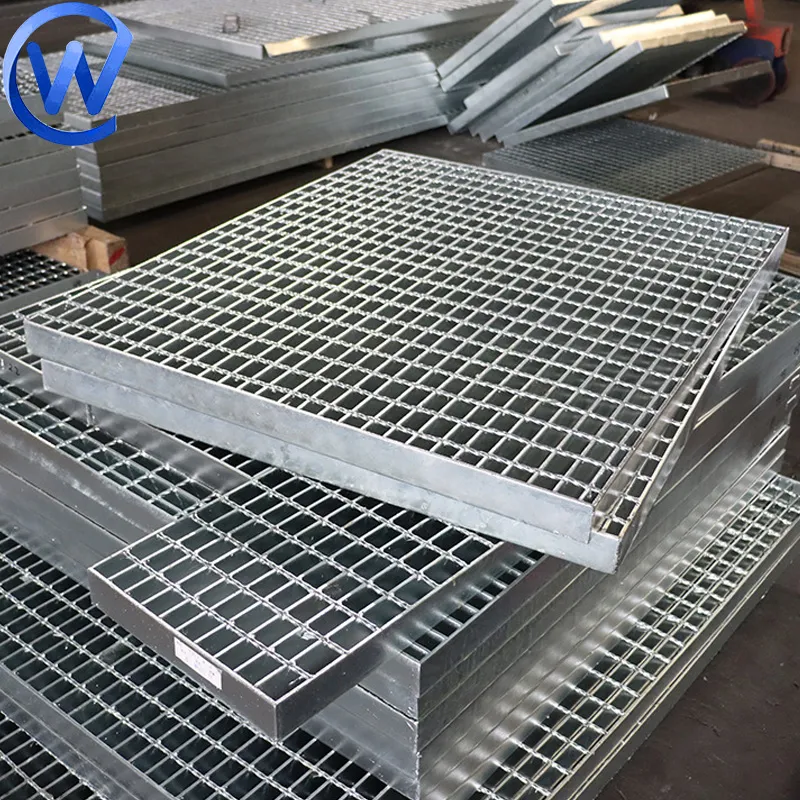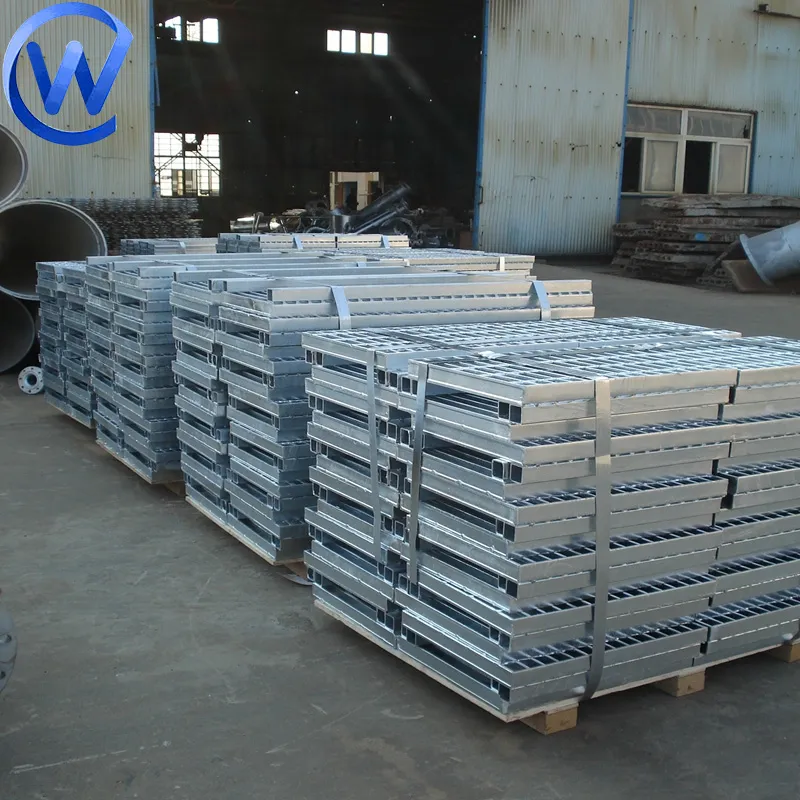-
+86 15030157877
-
sales@galvanizedmetalmesh.com
Oct . 20, 2025 11:55 Back to list
Steel Grating: Durable, Anti-Slip, Corrosion-Resistant Value
A Field Guide to Modern Steel Grating: Trends, Specs, and Real-World Lessons
I’ve spent enough time on plant floors to know you can tell a lot about a site by the walkways under your boots. When you step onto steel grating, you’re standing on a small engineering decision with big consequences: safety, drainage, maintenance, total cost of ownership. Let’s unpack what’s working now, what’s new, and what to watch.

Industry trends I’m seeing
- Safety-first designs: serrated steel grating is edging out smooth in wet/process areas due to higher wet COF.
- Spec drift to standards: buyers explicitly calling out ASTM A123/EN ISO 1461 for zinc systems and BS 4592 for open flooring. Good sign.
- Supply chain consolidation in Hebei, China (notably Anping). Origin matters: South Industrial Zone 07, Anping County, Hebei is a legitimate hub.
- More customization: press-locked and swage-locked panels for architectural fit and tighter tolerances.
What it is (and why serrated matters)
You’ll find two main surfaces: serrated and smooth. Serrated bars—low carbon, aluminum, or stainless—are welded, press-locked, swage-locked, or riveted to form different steel grating types. In the real world, serration translates to fewer slips and faster drainage. Smooth still has its place (clean rooms, architectural applications), but I’d spec serrated for oily, wet, or outdoor platforms almost every time.

Core specifications (typical ranges)
| Parameter | Typical Spec (≈ / around) |
|---|---|
| Bearing bar size | 20×3 mm to 65×5 mm (carbon steel Q235/Q345; SS304/316; Al 6063-T6) |
| Bearing bar pitch | 30–40 mm common (19 mm tight mesh available) |
| Cross bar spacing | 50–100 mm (welded/press-locked/swage-locked/riveted) |
| Surface | Serrated or smooth |
| Finish | Hot-dip galvanized (EN ISO 1461 / ASTM A123), passivated SS, or mill finish |
| Slip resistance (wet) | Serrated COF ≈ 0.55–0.80 (real-world use may vary) |
| Service life | HDG carbon steel ≈ 15–30 yrs (industrial), 8–15 yrs coastal; SS 304/316 longer |
Process flow and QA (how it’s actually made)
- Material prep: choose low carbon steel, stainless, or aluminum bars; verify mill certs (EN 10204 3.1).
- Cutting and assembly: align bearing bars, insert cross bars; choose welded, press-locked, swage-locked, or riveted based on load/aesthetics.
- Finishing: hot-dip galvanize to zinc coating ≈ 70–100 µm per ASTM A123/EN ISO 1461; or use SS passivation.
- Testing: load/deflection to BS 4592; slip tests to OSHA 1910 guidance; salt-spray (ASTM B117 optional); visual per ISO 1461.
- Packing & traceability: panel tagging, batch ID, and corner protectors. Simple, but saves headaches onsite.

Where it works best (and why)
Common applications for steel grating include petrochemical platforms, wastewater plants, trench covers, conveyor walkways, mezzanines, mining catwalks, power stations, and even architectural sunscreens. Advantages? High strength-to-weight, fast drainage, low maintenance, and straightforward replacement. Many customers say installation feels “Lego-like”—trim, band, bolt, walk away.
Vendor snapshot (what buyers compare)
| Vendor | Lead Time | Standards | Customization | Price Band | Notes |
|---|---|---|---|---|---|
| Anping Producer (South Industrial Zone 07, Hebei) | ≈ 10–18 days | ASTM A123, EN ISO 1461, BS 4592 | High (press-/swage-locked, banding, treads) | $$ | ISO 9001; consistent zinc thickness |
| Regional Fabricator (US/EU) | ≈ 2–4 weeks | BS/OSHA local codes | Very High (site surveys) | $$$ | Fast change orders, premium |
| Low-Cost Trader | Varies | Mixed | Low–Medium | $ | Check QA and coating certs |
Customization checklist
- Panel size and banding (kick plates, toe boards).
- Serrated vs. smooth; bearing bar orientation for deflection control.
- Cutouts for pipe/electrical; stair treads with nosing; anti-spark SS for food lines.
- Coatings: HDG thickness, duplex paint over zinc in coastal sites.
Quick case study
A mid-sized food processor replaced worn smooth panels with serrated SS304 swage-locked steel grating over brine tanks. Wet COF improved from ≈0.38 to ≈0.66; incident rate dropped to zero over 9 months. Cleaning crews reported faster hose-down (less ponding), and the maintenance team liked the stiffer feel at a 900 mm span with 30×5 mm bearing bars. Not flashy, just effective.

Final thoughts
If I had one tip, it’s this: spec to recognized standards and ask for test data—load/deflection, zinc thickness, and slip numbers. That, plus origin transparency, separates dependable steel grating from guesswork.
Authoritative references
- ASTM A123/A123M – Zinc (Hot-Dip Galvanized) Coatings on Iron and Steel Products.
- EN ISO 1461 – Hot dip galvanized coatings on fabricated iron and steel articles.
- BS 4592 – Industrial type flooring, stair treads and handrails.
- OSHA 29 CFR 1910 Subpart D – Walking-Working Surfaces (slip resistance guidance).
- ISO 9001 – Quality management systems (manufacturing certification).
-
Durable Fence Barbed Wire Solutions for Global Security & Agriculture
NewsNov.24,2025
-
Comprehensive Guide to Barbed Fence Wire – Durability, Uses & Innovations
NewsNov.23,2025
-
Barb Wire Price Per Roll – Understanding Costs, Trends & Global Applications
NewsNov.22,2025
-
Stainless Steel Barbed Wire: Durable Security for Global Industries & Relief Efforts
NewsNov.22,2025
-
Comprehensive Guide to Razor Wire Prices: Factors, Trends & Vendors
NewsNov.21,2025
-
Concertina Razor Wire: The Ultimate Guide to Secure, Practical Barrier Solutions
NewsNov.20,2025



